Contents
- Early History
- Colonial History
- Local Figures & Organizations
- King Raje Dharm Rao
- Gondi Language & the Gond Community
- Post-Independence Era and Contemporary Educational Infrastructure
- Primary & Secondary Education
- Institutions of Higher Learning
- Raje Dharmrao Krushi Vidyalaya & Jr. College
- College of Agriculture, Sonapur
- Gondwana University
- Prominent Figures & Organizations
- Nutan Shiksha Pariksha Mandal
- NGOs and Community-Based Education Efforts
- Mi Swakshari Karnar Project & Lloyds Industry Foundation
- Graphs
- Enrollment and Dropout Rate
- A. Student Enrollment Numbers
- B. Student Enrollment (Class-Wise)
- C. Student Enrollment (Gender-Wise)
- D. Student Enrollment (By School Management Type)
- E. Drop Out Rate (By Schooling Level)
- F. Drop Out Rate (By Gender)
- Schools
- A. No. of Schools
- B. No. of Schools (Filtered by Gender Mix)
- C. No. of Schools (By School Management Type)
- Teachers
- A. No. of Teachers
- B. No. of Teachers (By School Management Type)
- C. No. of Teachers (Male vs Female)
- D. Education Level of Teachers
- Sources
GADCHIROLI
Education
Last updated on 28 July 2025. Help us improve the information on this page by clicking on suggest edits or writing to us.
The educational framework of Gadchiroli aligns with the broader structure of the Indian education system, encompassing pre-primary, primary, secondary, and higher education. By the 19th century, the introduction of the Western education framework in the district changed its educational landscape. British administrators and missionaries became actively involved in shaping education in the region.
Still, even as colonial influences grew, the early 20th century saw a wave of local initiatives; its existence indicated an increasing public awareness regarding the importance of education. Local communities took charge of education, a movement that carried into the post-independence era, shaping the district’s educational landscape in lasting ways.
Early History
Little is known about the history of education in Gadchiroli, however, this does not imply that formal or any system of education was completely absent in the district. It is possible that, like many places across Maharashtra, some systems of education did exist in the district in earlier times.
Colonial History
The evolution of education in Gadchiroli during the colonial period was shaped by a combination of administrative restructuring, missionary involvement, and local engagement. Little is known about early educational developments specifically within the present boundaries of Gadchiroli, as it was only designated a separate district in 1982. However, references to the area can be found in the Chanda District Gazetteer (1909), since Gadchiroli was then part of the larger Chandrapur district.
According to the Gazetteer, facilities in outlying areas such as Sironcha, now part of Gadchiroli district, had begun to emerge by the early 20th century. It noted that “the girls’ school at Sironcha is maintained by local funds” and that “Marathi is now being taught” at the local middle school. Chandrapur district’s educational administration was overseen by the Nagpur circle and there were three subdivisions here, one of which was in Sironcha.
Local Figures & Organizations
While entities from the West played a significant role in shaping the educational landscape of Gadchiroli, local figures and organizations also emerged as key contributors. Many institutions were founded by them, some of which continue to shape education in the district today.
King Raje Dharm Rao
One notable figure in this development was King Raje Dharm Rao (Aheri) of the Gond Dynasty. In 1907, locals say that he donated funds that facilitated the establishment of Raje Dharmrao Primary School near Jatpura Gate.
Gondi Language & the Gond Community
It is important to note that the introduction of Western educational systems significantly impacted indigenous systems and local cultural practices. In the case of Gadchiroli, particularly among the Gond community, who constitute a significant share of the district’s population, later reflections suggest that the introduction of the colonial education system had dire consequences for them.
Ramteke (2024) in his article writes, “British colonisation forced cultural displacement through the education system, which continued in independent India. For instance, Gadchiroli’s Gond families are forced to enroll their children in Marathi-medium schools. They are instructed in a language that they are unable to speak or comprehend.” Notably, in the post-Independence era, efforts have since emerged to reclaim linguistic and cultural autonomy, particularly through community-driven educational initiatives in the district. (see more below)
Post-Independence Era and Contemporary Educational Infrastructure
Following India's independence, the education system in Gadchiroli underwent major transformations. The introduction of structured education levels—pre-primary, primary, secondary, and higher education and the implementation of National Education Policies heavily shaped the educational landscape of the district. Over the years, the education sector developed with contributions from both government-funded institutions and private organizations. Additionally, Educational boards were also introduced, each offering distinct curricula and standards, providing students with more choices.
Primary & Secondary Education
During the colonial period, both public and private efforts in education primarily focused on primary and secondary schooling, as indicated by data from district gazetteers across Maharashtra. Higher education remained underdeveloped in most districts, including Gadchiroli, with gradual improvements over time. While basic infrastructure for primary and secondary education existed, its expansion was closely tied to increasing enrollment and greater involvement of local figures.
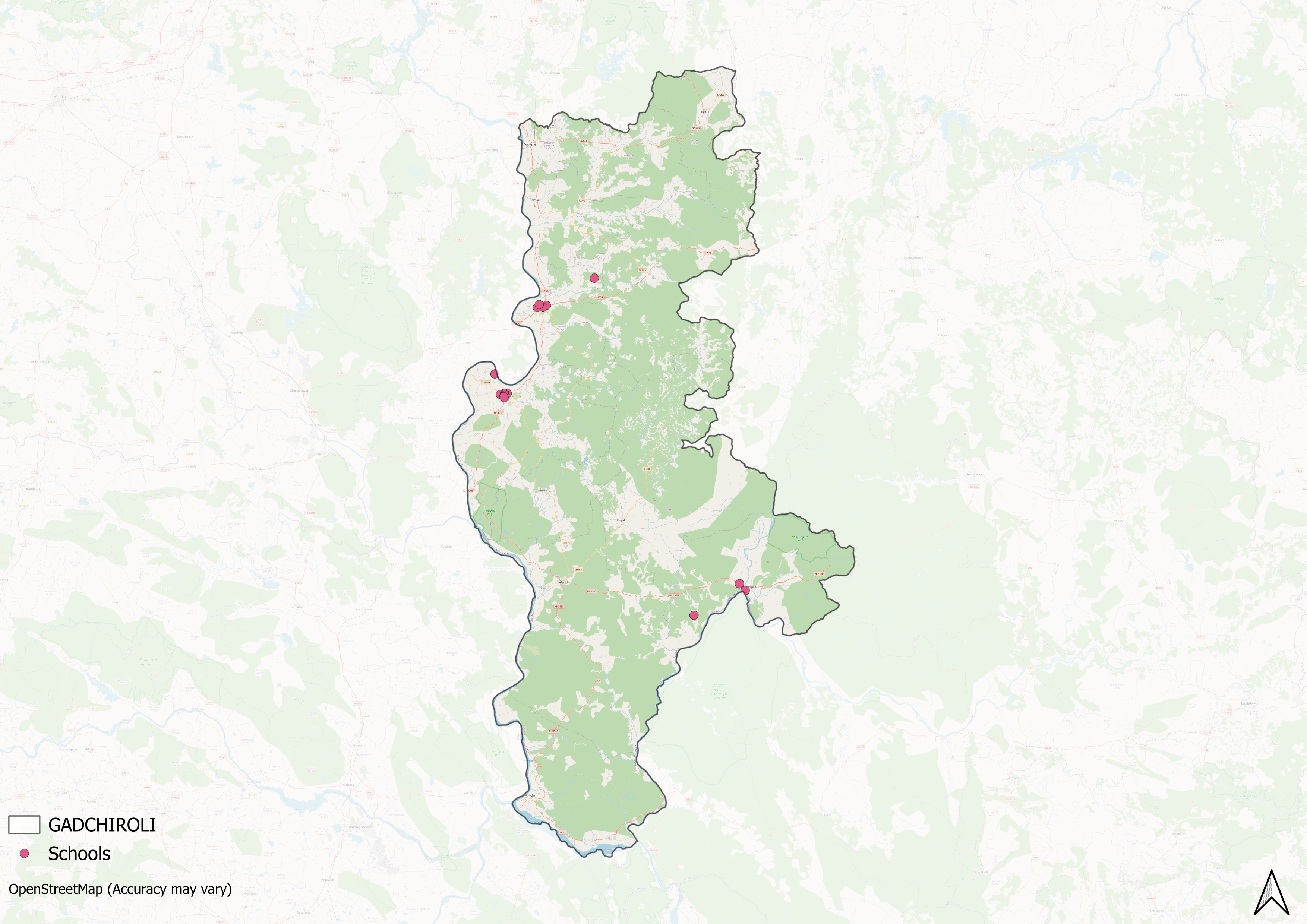
Today, this expansion is evident in the widespread presence of schools across various wards of Gadchiroli, with available data reflecting the steady growth of educational institutions in both urban and rural parts of the district.
The introduction of multiple educational boards have further diversified the district’s schooling options. Government schools form the foundation of the district’s educational system. Over time, institutions affiliated with other boards, including the Central Board of Secondary Education (CBSE), have also emerged. Locals say that the first CBSE-affiliated school in Gadchiroli district was established in 1986.
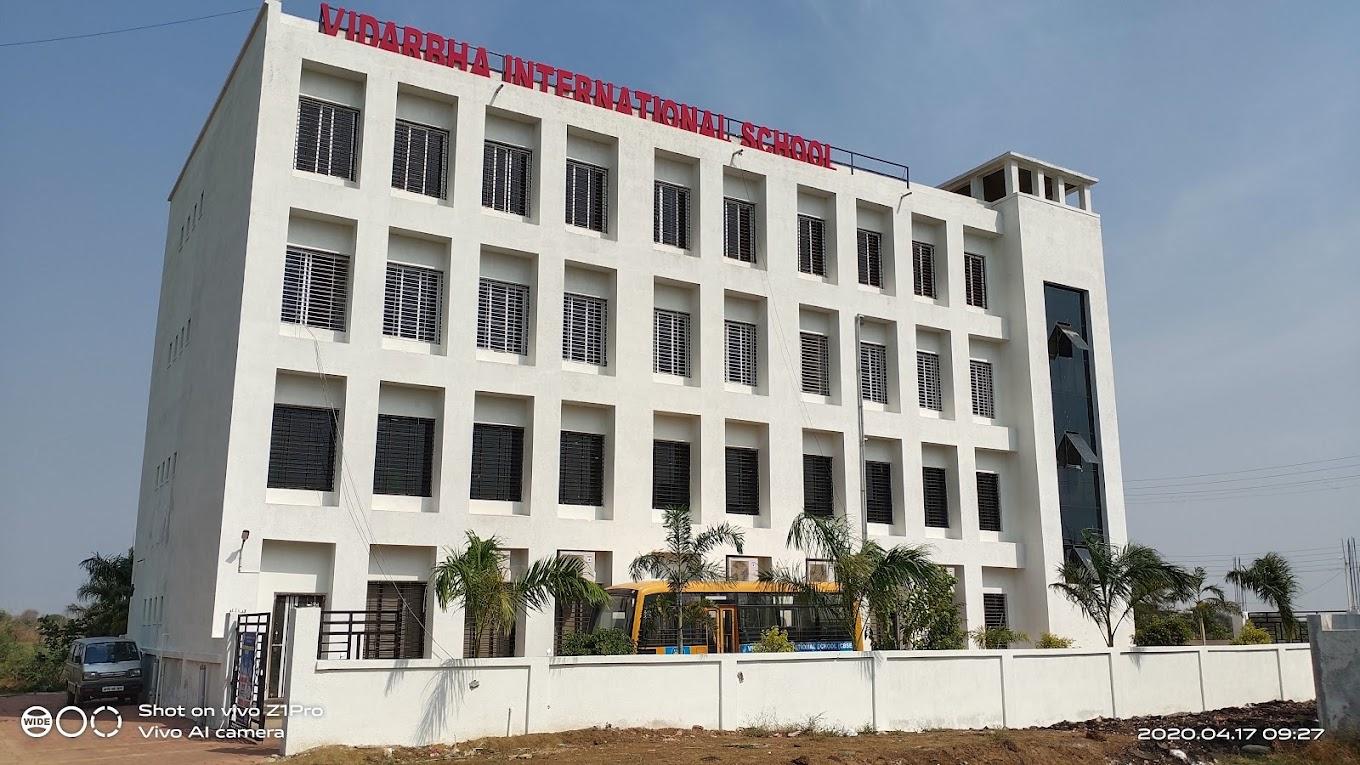
That same year, a branch of the Jawahar Navodaya Vidyalaya (JNV) was established at Ghot. Part of a nationwide network of centrally run residential schools, JNVs provide free education from grades 6 to 12, specifically aimed at academically talented students from rural areas.

One of the most distinctive developments in recent years in the district has been the establishment of the Paramparik Koya Dnyanbodh Sanskar Gotul in Mohagaon village. In 2019, fifteen gram sabhas in the region passed a resolution asserting the right to mother-tongue education. The result was the founding of a school where the medium of instruction is Gondi, the language spoken by the local Gond community.
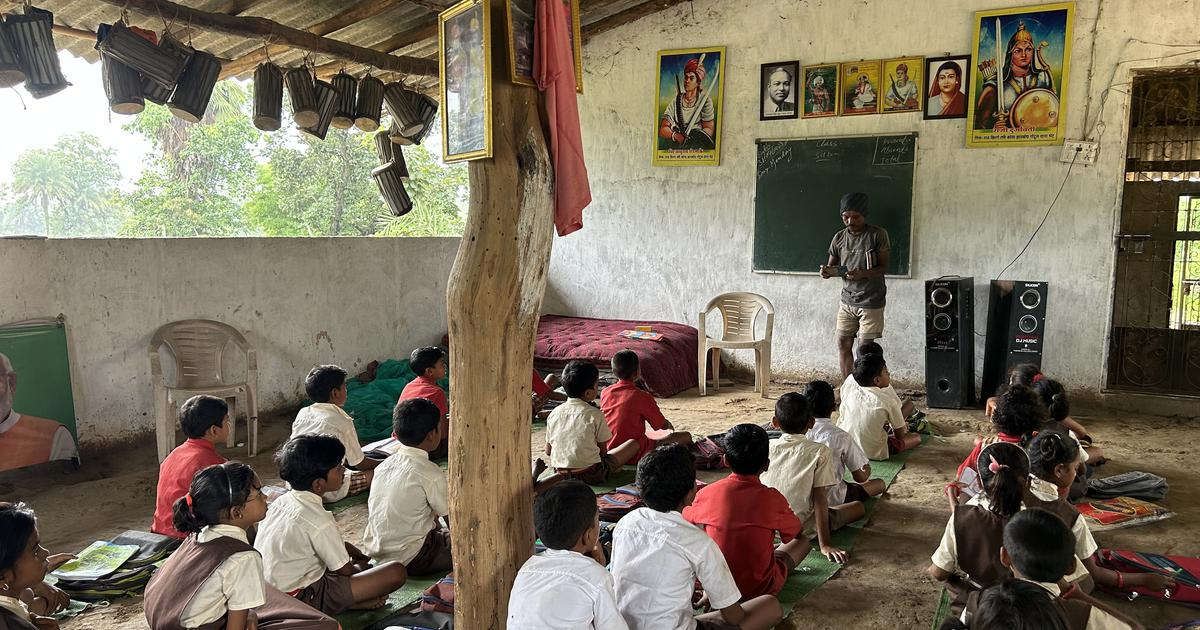
The structure of the school draws from the traditional gotul, a cultural and educational institution among the Gonds where youth are taught oral history, ethics, and communal responsibilities. The Mohagaon school adapts this structure to a contemporary setting, aiming to provide children with foundational education rooted in their language and cultural identity.
This initiative emerged from a growing concern that Gondi-speaking students faced a disconnect in schools where both the language and the curriculum felt unfamiliar (which is briefly discussed earlier). By reintroducing indigenous language education in a formal context, the school, in many ways, marks a significant step toward linguistic and cultural preservation in the country.
Institutions of Higher Learning
Perhaps one of the most notable changes in Gadchiroli’s educational landscape is tied to the establishment of higher education institutions. While primary and secondary schooling expanded steadily, opportunities for advanced education remained limited for much of the district’s history. Over time, local leaders and organizations played a crucial role in addressing this gap, leading to the creation of several colleges. As a result, many institutions in the district today are privately managed, semi-private, or autonomous.
Raje Dharmrao Krushi Vidyalaya & Jr. College
Founded by Raja Vishweshwarrao Maharaj in 1993, this institution was among the earliest colleges in the remote Mulchera region of Gadchiroli. It has since become one of the most prominent educational centres in Aheri. Recognized by the University Grants Commission, the college continues to serve students from rural and Scheduled Tribe backgrounds.
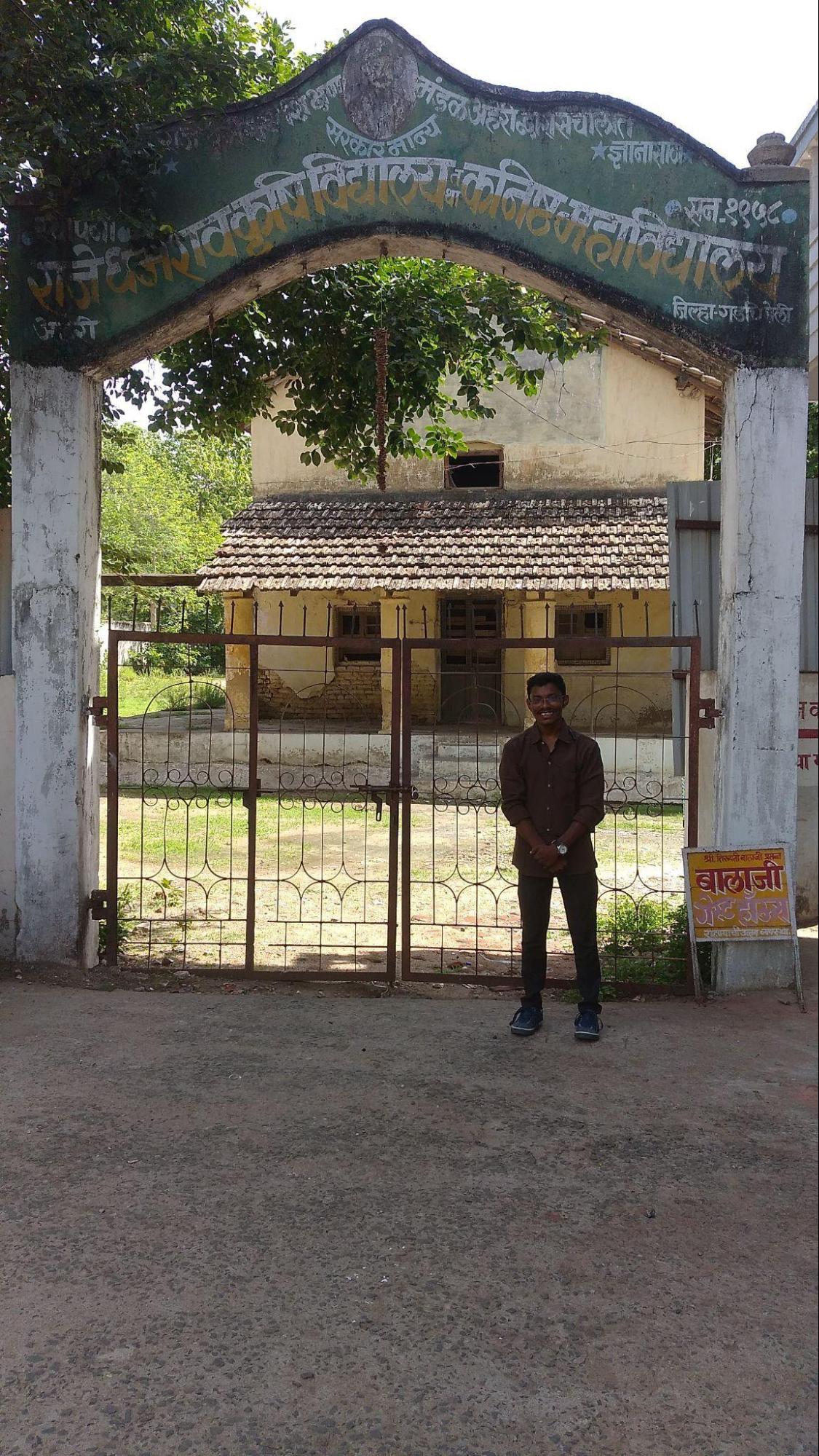

College of Agriculture, Sonapur
Affiliated with Dr. Panjabrao Deshmukh Krishi Vidyapeeth, Akola, the College of Agriculture was established in 2008 to provide region-specific agricultural training. With support from the Tribal Development Department, the college operated under a five-year funding framework, reserving 80% of seats for ST students.
Its curriculum includes crop production, mechanization, forestry, and cooperative farming, aimed at promoting sustainable development in the region.
Gondwana University
Gondwana University was formally established in 2011 to serve the educational needs of Gadchiroli and Chandrapur districts. It offers undergraduate, postgraduate, and doctoral programs across multiple faculties, including arts, science, commerce, law, engineering, education, and pharmacy. The university has become the academic anchor for the region, with many colleges now affiliated under its jurisdiction.
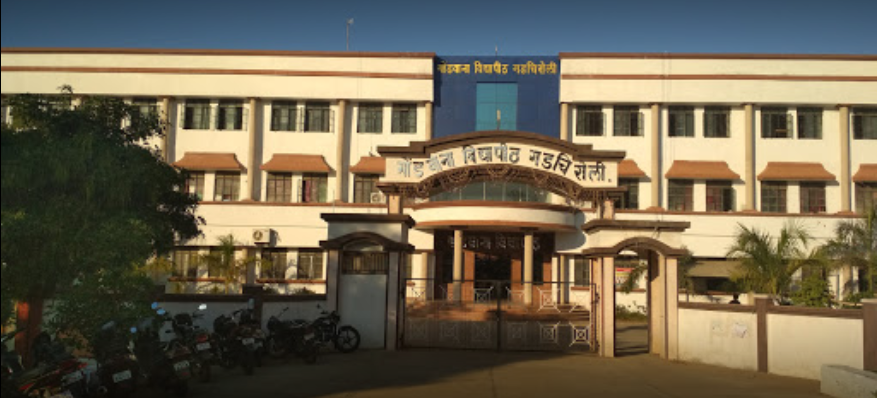
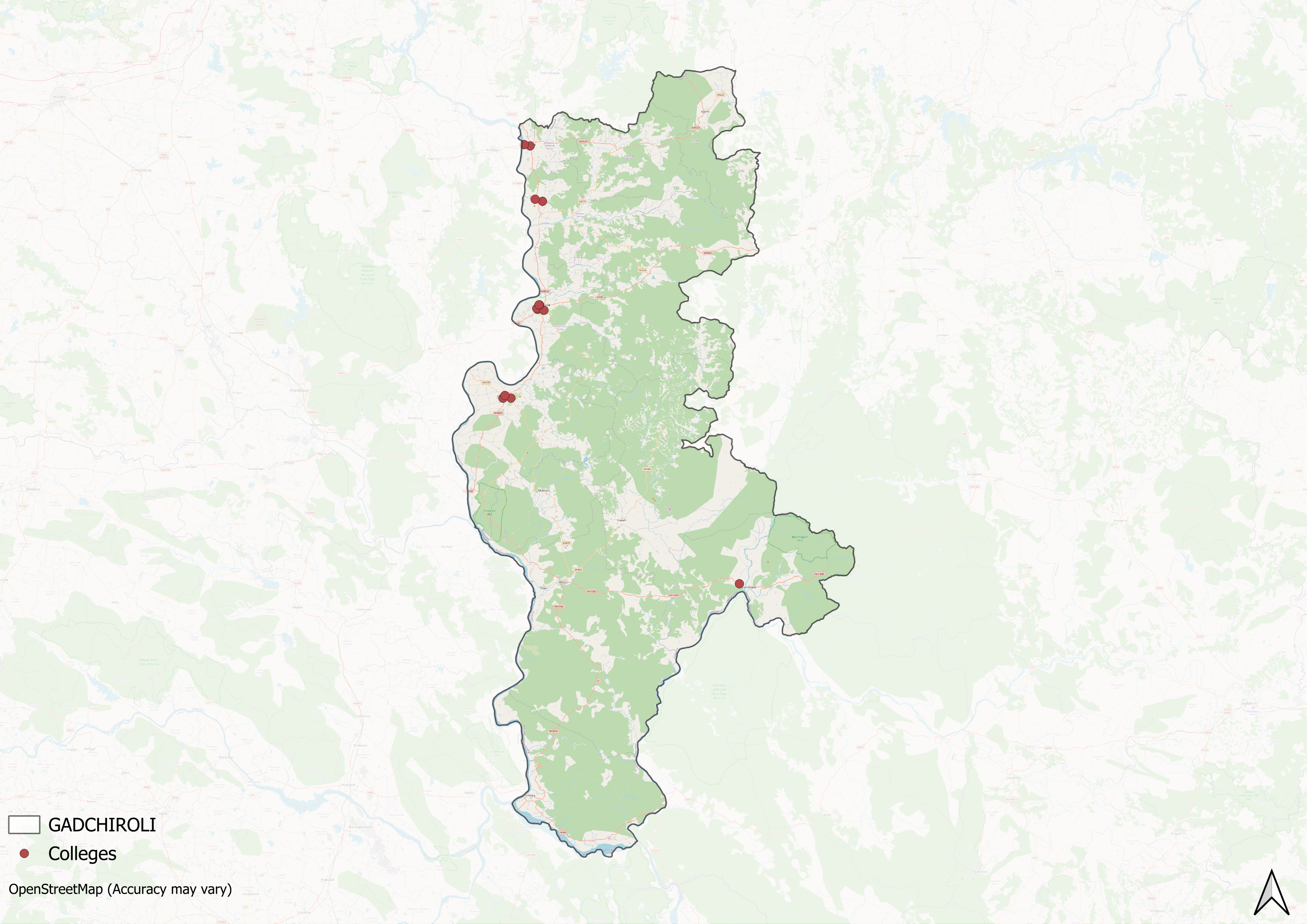
In addition to these institutions, a number of centres for higher education operate throughout the district, which offer programmes across various disciplines. While the landscape of higher education has broadened significantly since independence, disparities in access, particularly along geographic lines, remain evident.
Prominent Figures & Organizations
Nutan Shiksha Pariksha Mandal
Nutan Shikshan Prasarak Mandal is an educational organization which focuses on addressing the educational needs of the rural-Scheduled Tribe (ST) communities in Desaiganj (Wadsa) area. Prior to its founding, “No college existed within a 10 to 12-kilometre radius,” noted the Mandal in its founding resolution, underscoring the region’s isolation from mainstream educational opportunities.
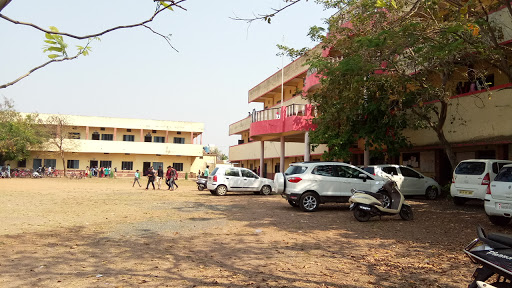
Recognizing the urgent need for educational advancement in this region, Nutan Shikshan Prasarak Mandal, drawing on its extensive experience in the education sector, took decisive action. The organization has been successfully operating a high school since 1958 and a junior college since 1984. In response to the pressing educational gap, the Mandal decided to expand its offerings by founding a senior college. This initiative led to the establishment of Adarsh Arts & Commerce College in 1989-90, aimed at providing essential higher education opportunities and fostering socio-economic development in the region.
NGOs and Community-Based Education Efforts
Education has been a key driver of social reform, particularly in addressing inequality and expanding access to learning. While formal institutions provide structured education, many communities continue to face barriers due to poverty, social stigma, or lack of resources. To address these challenges, various organizations in Gadchiroli have focused on community-based education initiatives, with each working to tackle specific social challenges present in the district.
Mi Swakshari Karnar Project & Lloyds Industry Foundation
The “Mi Swakshari Karnar” project, which translates to “I will sign,” was an educational initiative undertaken by the Lloyds Industry Foundation (LIF) in the Gadchiroli district. The project is designed to empower illiterate women across 18 remote villages in the Etapalli Block by teaching them the essential skill of signing their names.
The project was carried out over a period of 15 days and involved a multifaceted approach to education and community engagement. Activities included street plays to raise awareness, baseline surveys to assess needs, corner meetings to engage with the community, and daily one-hour classes to provide hands-on learning. As a result of these efforts, according to their website, 189 women gained the ability to sign their names, marking a significant step towards their empowerment.
In addition to this initiative, LIF is involved in various other educational endeavors, such as sponsoring children in the village and distributing educational materials, further contributing to the educational development of the region.
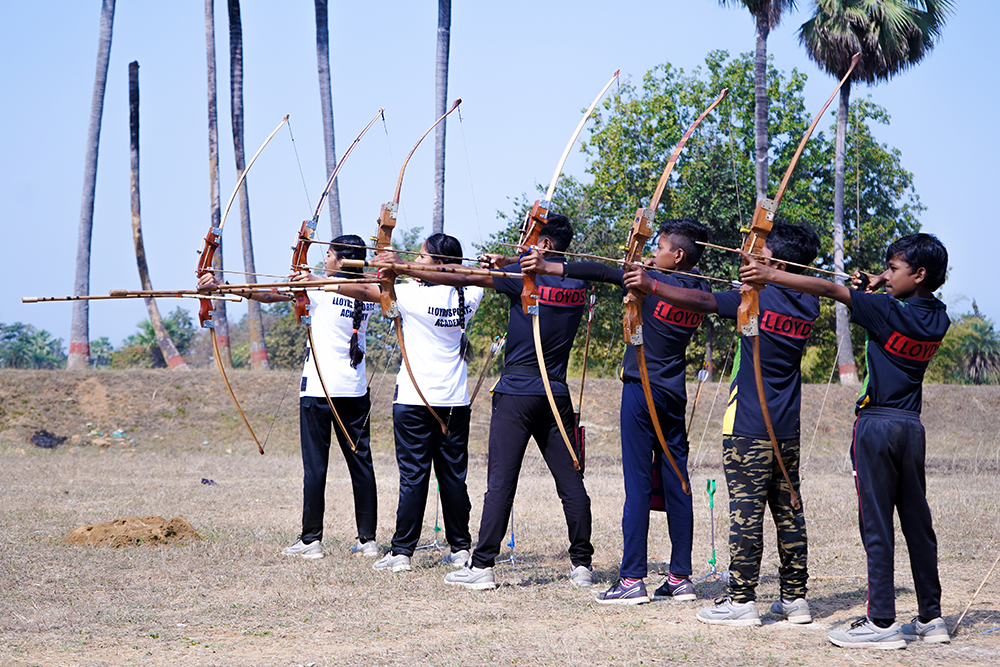
In addition to its education-based initiatives, the organization has also formed a Sports Academy in the taluka, which provides specialized training in various sports, including archery. The academy plays a crucial role in offering students opportunities to excel in sports and promoting sports education within the district.
Graphs
Enrollment and Dropout Rate
Schools
Teachers
Sources
Adarsh College Desaiganj. n.d. “About Foundation.”https://adarshcollegedesaiganj.edu.in/about-…
Bodhi Ramteke. 2024. “Why a Community-Run Gondi Language School in Gadchiroli Is a Revolutionary Step.”Scroll.in.https://scroll.in/article/1069269/why-a-comm…
Lloyd’s Infinite Foundation. n.d. “Education.”https://lloydsinfinite.org/education/
RDC Education. n.d. “About Us.”https://www.rdcedu.in/about-us.php
Russel V. ed. 1905. Central Provinces District Gazetteers: Chanda District. Pioneer Press, Allahabad.
Last updated on 28 July 2025. Help us improve the information on this page by clicking on suggest edits or writing to us.